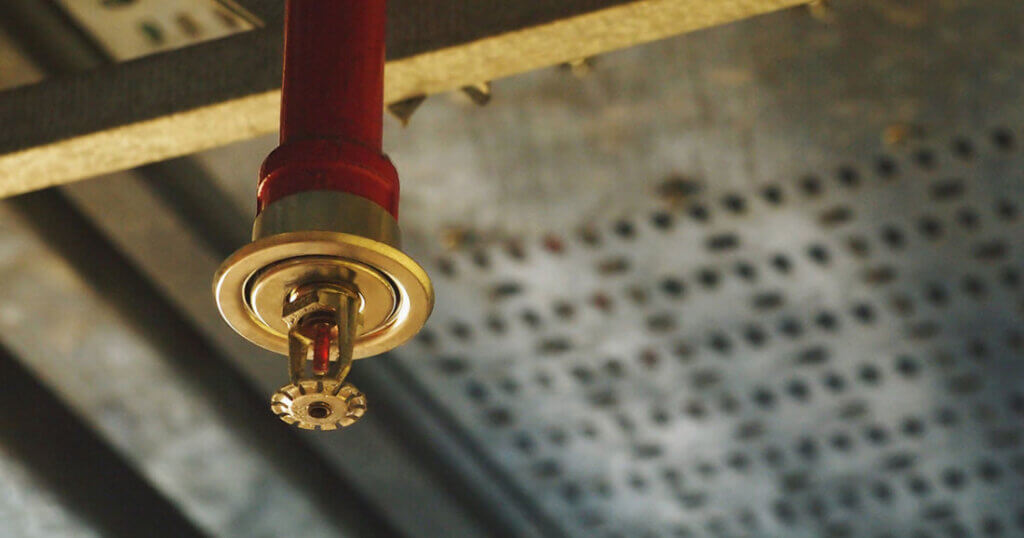
The Tax Cuts and Jobs Act of 2017 created a number of new opportunities for tax savings. One area in which tax benefits have been enhanced relates to the installation of fire sprinklers, or fire protection systems in preexisting structures. Through tax reform, Congress amended two sections of the Internal Revenue Code of 1986 (Code, or IRC) to allow qualifying property owners full and immediate deductions of the costs associated with the installation of new fire protection systems.
The Benefit of Fire Protection Systems
The push for this new legislation addressing fire protection systems has been long in the making. Initially, significant attention was drawn to the importance of fire protection systems due to the February 2003 Station nightclub fire in Rhode Island. This fire, which claimed the lives of 100 people and injured over 200 others, was particularly disastrous due to the absence of fire protection systems on the property. As a result, the National Fire Sprinkler Association (NFSA), the National Fire Protection Association (NFPA) and other advocacy groups began pushing for a common sense way to incentivize the installation of fire sprinkler and fire protection systems in commercial and residential properties.
Overview of Tax Reform
In 2017, approximately 14 years after the Station nightclub fire, Congress passed tax legislation including amendments to two separate sections of the Code, both relating to depreciation deductions. These amended sections incentivize the implementation of new fire protection systems in specific circumstances by allowing a taxpayer to deduct up to the full cost of an installed fire protection system from federal taxable income in the tax year the improvement is completed, resulting in a lower overall tax liability.
First, IRC section 179 was amended to add “fire protection” to the list of improvements allowed to be expensed as depreciable business assets for small businesses (IRC § 179(f)(2)(C); redesignated § 179(e)(2)(C) by P.L. 115-141 (March 23, 2018)). Formerly, this provision allowed taxpayers to deduct the cost of tangible business property (computers, office furniture, etc.) of up to $500,000 per year. Under the amendment, fire protection systems are eligible for this deduction, which has been increased to a limit of $1 million per year (IRC § 179(b)(1)). However, this maximum allowance is reduced on a dollar-for-dollar basis by the amount of qualified property placed in service over a $2.5 million threshold (IRC § 179(b)(2)). Therefore, when eligible property placed in service is in excess of $3.5 million within a tax year, the deduction is phased out.
Next, IRC section 168 was amended to allow an immediate depreciation deduction of 100 percent of the costs associated with the installation of a fire protection system (IRC § 168(k)(6)(A)(i)). This deduction is referred to as “bonus depreciation. Previously, depreciation of fire protection equipment was generally allowed; however, the depreciation schedule for this type of property was extended over 39 years for commercial properties or 27.5 years for residential properties. The newly-enacted 100 percent bonus depreciation deduction is effective until January 1, 2023. After that time, deductions are reduced to 80 percent in 2023, 60 percent in 2024, 40 percent in 2025, and 20 percent in 2026. Absent future legislation, the schedule then reverts back to the original depreciation schedule of 39 years or 27.5 years in 2027
Interplay between IRC Section 179 and Section 168
While the amendment allowing for bonus depreciation of fire protection systems applies to both residential and commercial properties, the amendment to IRC section 179 is limited to commercial properties. However, the bonus depreciation deduction reverts back to the original depreciation schedule after 10 years, and the changes to IRC section 179 have been made permanent. Lastly, IRC section 179 depreciation generally must be applied before bonus depreciation can be used.
Conclusion and Summary
The installation of fire protection systems has proven effective. A recent NFPA study shows that sprinkler systems operated in 92 percent of the fires in which sprinklers were present and the fire was large enough to activate them. Of the fires in which the sprinkler systems were triggered, the sprinklers were effective in controlling 96 percent of fires. The chart below outlines examples of how a property owner may be able to take advantage of these new tax opportunities while creating a safer environment on the property.[1]
| Nightclub Retrofit | Bowling Alley | High-Rise Office | Multiple Group Homes | |
| Size of Structure | 7,500 sq. ft. | 20,000 sq. ft | 18 floors with 26,000 sq. ft./floor | Approximately 16 separate locations |
| Cost to Install Sprinkler System | $6/sq. ft. | $4.50/sq. ft. | $6.50/sq. ft. | Variable |
| Total Cost | $45,000 | $90,000 | $3.042 million | Approximately $5 million |
| Previous Law | 39-year depreciation schedule | 39-year depreciation schedule | 39-year depreciation schedule | 39-year depreciation schedule |
| New Law | Under IRC § 179, the cost could be fully expensed in year 1. | Under IRC § 179 the cost could be fully expensed in year 1. | Under IRC § 168 the cost could be fully expensed for the first five years, then declining depreciation deductions are available. | Under IRC § 168 the cost could be fully expensed for the first five years, then declining depreciation deductions are available. |
[1] Information found in chart is provided by the NFSA’s, “Tax Reform Info” pamphlet. These examples are meant to provide rough estimates of costs, as the type and location of a structure can greatly alter the actual cost to install a fire protection system. These illustrations may not directly correlate to the tax deductions allowed for an installation of a fire protection system on your property.
This article was co-written by Ethan Beswick, a summer associate at Varnum in 2018.
